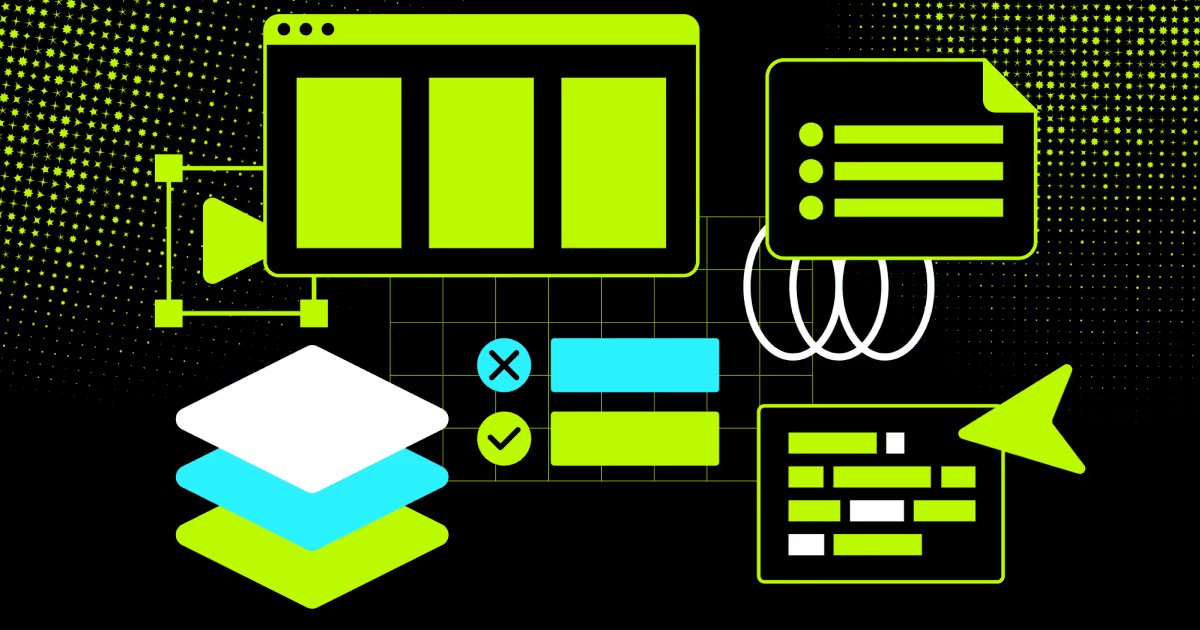Align testing with business needs, automate smartly, slash costs, and boost quality. We develop a methodical testing framework that establishes precise quality standards and ranks risks. This guarantees thorough testing covering all important features and user situations.




Scroll down
Unify your correct functionality with enterprise testing strategy
Good testing starts with a clear plan. We help you build a software test strategy, showing you what to test, how, and where to focus your effort. Our main idea is simple: you need to catch the bad bugs fast, without getting buried in useless tests. We help you keep quality high while moving quickly — by giving you a testing approach that fits how your team works and what your project really needs.
Testing strategy for your software projects
We architect tailored digital solutions from first-principles engineering, integrating QA testing strategies at each development layer. You gain resilient, purpose-built systems that eliminate technical debt while scaling with your operational demands.
Our experts turn your outdated systems into cloud-native architectures using containerization, microservices, and API-first design, while implementing real-time testing strategies to ensure zero downtime during migration. You'll cut legacy maintenance costs, unlock seamless scalability, and gain instant compatibility with modern DevOps workflows.
We build self-healing systems with real-time failover protocols that automatically detect and recover from failures using distributed consensus algorithms and state machine replication. Your operations gain continuous fault immunity, eliminating single points of failure while maintaining transactional integrity during worst-case scenarios.
Our teams engineer fault-tolerant systems, rigorously validated through high-grade enterprise testing strategies that simulate real-world failure scenarios. Your operations gain full uptime resilience, ensuring zero revenue loss during peak loads or infrastructure failures while meeting the strictest compliance requirements out of the box.
We craft speed-optimized software using low-level system tuning and parallel processing architectures, rigorously proven through benchmark-driven performance test strategies. Your solutions outperform conventional applications in throughput while maintaining resource efficiency under extreme operational demands.
COAX experts architect universal code ecosystems using platform-agnostic core modules and adaptive interface layers, cross-checked through cross-environment testing across multiple device configurations simultaneously. With this approach, you cut platform-specific development costs and deliver one unified experience everywhere.
We build hacker-proof systems with continuous identity verification and automatic threat blocking, rigorously tested through bulletproof data warehouse testing strategies. Your business gets a 360-degree protection that keeps sensitive data safe 24/7 without slowing down operations.
Our specialists implement hyper-efficient development sprints using parallel workflow orchestration, validated through intelligent automation test strategies that accelerate QA without compromising coverage. You achieve faster delivery cycles with zero technical debt, hitting deadlines and budgets while maintaining top quality.
Why choose COAX for developing your software testing strategies?
Practice-tested QA knowledge
With 15 years in the industry, our methods are proven approaches refined through actual software releases. We've seen what works (and what doesn't) across dozens of real projects, so your testing strategy skips the trial-and-error phase and gets right to what delivers results.
Your on-demand success team
Our flexible engagement model delivers immediate access to specialized skills. We function as an extension of your QA team, providing test strategy development expertise precisely when required, whether for critical project phases or ongoing quality initiatives.
Latest AI/ML technology integration
Our QA experts enhance your testing processes with machine-learning testing frameworks that learn from your systems. This results in smarter resource allocation and more reliable releases, as the system constantly refines its understanding of your software.
Partnership from strategy to execution
Whether you need a cloud migration testing strategy, security validation for fintech applications, or performance optimization for IoT ecosystems, we bring the right expertise at the right time. We cover every requirement across web, mobile, and enterprise systems.
The testing knowledge multiplier effect
We systematically transfer our testing methodologies through hands-on collaboration, ensuring your team gains practical skills. This creates lasting quality improvements that extend far beyond individual projects, building institutional testing expertise.
Proven ROI from day one
Our data-driven approach ensures measurable quality improvements from the first sprint, reducing defects, cutting regression time, and accelerating releases while maintaining high standards.
Test strategy: COAX roadmap
We shape your business objectives into actionable test strategies in software testing, mapping critical user journeys to prioritized test cases that protect revenue-impacting functionality first. Using risk-prediction models, we weight test coverage toward high-impact scenarios to safeguard your competitive differentiators.
We evaluate your tech stack and team workflows to select tools that align with your test approach. We configure reporting layers to automate your testing, from nightly regression suites to on-demand smoke tests, with results funneled into your existing monitoring dashboards.
At this step, we build modular test frameworks, separating test logic from implementation details through page object patterns for maintainable, version-resistant suites. Our implementation embeds testing into your CI/CD pipeline with parallel execution capabilities and containerized test environments to match exactly what's being deployed.
We analyze test execution metrics to refine your testing automation strategy, pruning low-value checks and adding targeted scenarios where defects occur. Every sprint, we rebalance test coverage based on recent production incidents, ensuring strategy evolves alongside the application’s real-world usage.
We auto-generate role-based dashboards, giving executives risk heatmaps, developers failure clusters, and product owners user-impact scores. Our reporting engine tags defects by priority codes defined in your QA strategy document, ensuring critical issues surface immediately while lower risks follow structured review cycles.
Our experts analyze your software's real-world performance through controlled stress tests to identify failure patterns. Our technical assessment also maps system dependencies through instrumentation and chaos engineering. The results define priority test areas that reflect genuine failure risks rather than assumed weaknesses.
We build hacker-proof systems with continuous identity verification and automatic threat blocking, rigorously tested through bulletproof data warehouse testing strategies. Your business gets a 360-degree protection that keeps sensitive data safe 24/7 without slowing down operations.
Tools and technologies we use
Test management
TestLink organizes our test assets while Jira drives execution, linking every defect back to its source test case automatically.
Test tools
OWASP ZAP and Burp Suite form the core, actively probing APIs for security flaws. JMeter validates the performance side, stress-testing endpoints under realistic load scenarios. Postman orchestrates functional validation, and BrowserStack extends our web services testing strategy to real-world conditions. Also, Android Studio complements these tools for mobile-specific validation, profiling native app interactions with backend services.
Test automation tools
We use variety of tools. Cypress delivers deterministic frontend testing with built-in debugging, WebDriverIO extends our browser automation with cross-platform flexibility, and Xcode provides the essential toolkit for iOS-specific testing, from unit tests to UI automation within Apple’s ecosystem.
SEO and security testing tools
Screaming Frog and SEO Quake power the technical SEO arm, auditing site structure and metadata to ensure search visibility aligns with user experience goals. Burp Suite elevates our software testing strategies for security, combining automated vulnerability scans with manual penetration testing.
What will your test strategy document include?
Defined validation layers (unit to UAT) with handoff protocols and integration touchpoints.
Hardware/software configurations mirroring production with version-controlled infrastructure.
Risk-weighted mix of boundary analysis, exploratory sessions, and automated testing strategy
Selected technologies supporting manual and automated testing strategy, as well as new feature validation.
Failure mode impact scoring guiding test effort allocation.
Objective quality gates (code coverage, defect density) for promotion/rejection.
Developer-owned unit tests vs QA-managed integration suites.
Key indicators like escaped defects and test-to-fail ratio.
Classification workflow linking bugs to regression test strategy updates.
Standardized runner configurations and environment-as-code practices.
Clear ownership for test design, execution, and maintenance tasks.
Trusted by our clients
Frequently asked questions and answers
A test strategy document is your testing "constitution" — the high-level rules defining what quality means for your project and how to achieve it systematically.
A test strategy defines the high-level principles (the why and what)—like risk tolerance, automation goals, and quality metrics — while a test plan specifies the tactical execution (the how and when) — such as test schedules, resource allocation, and pass/fail criteria.
A test strategy in software testing defines the high-level approach to quality assurance, including risk-based priorities, automation scope, environment needs, and success metrics. It establishes testing principles, roles, and compliance requirements while guiding regression efforts and stakeholder reporting.
A test plan doesn’t cover business objectives or why certain tools were chosen. It also leaves out long-term maintenance policies like when to retire old test cases, and it won’t include team training plans since those belong to HR or engineering leadership.
You need a testing strategy if your project is complex, has high risks, or involves multiple teams. It keeps everyone aligned on what to test and how. A testing strategy document becomes essential when "just testing" isn’t enough — you need a systematic approach to balance speed, coverage, and resources.
Want to know more?
Check our blog
What I’ll do next?
1
Contact you within 24 hours
2
Clarify your expectations, business objectives, and project requirements
3
Develop and accept a proposal
4
After that, we can start our partnership











